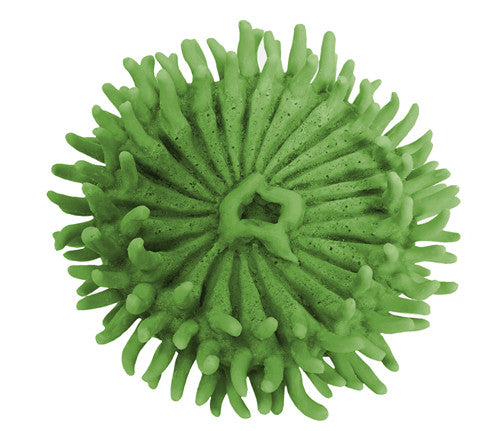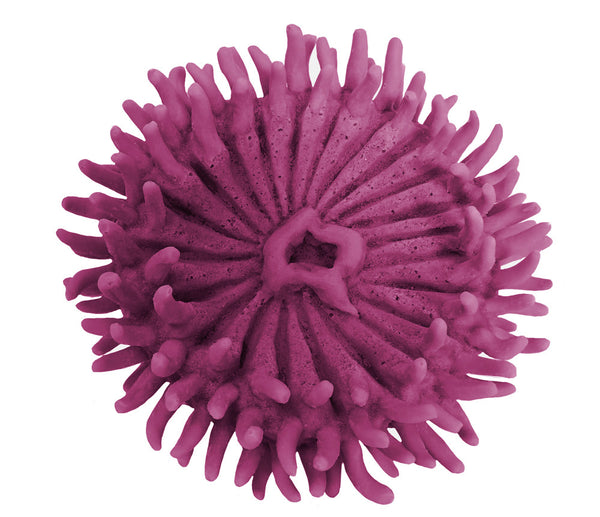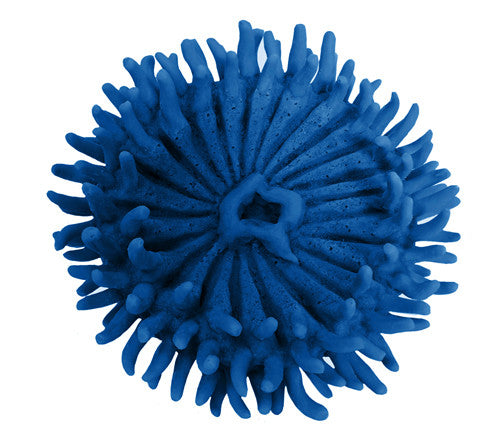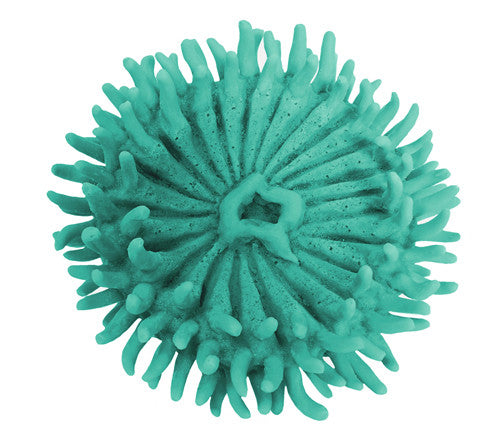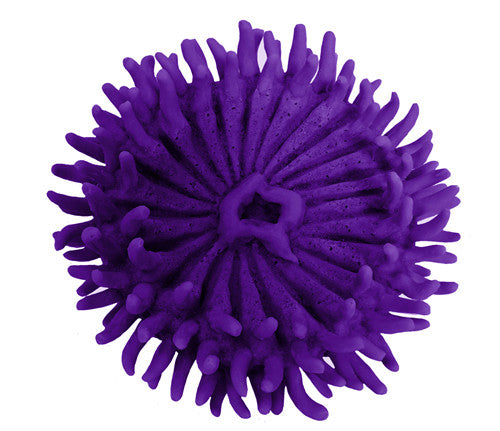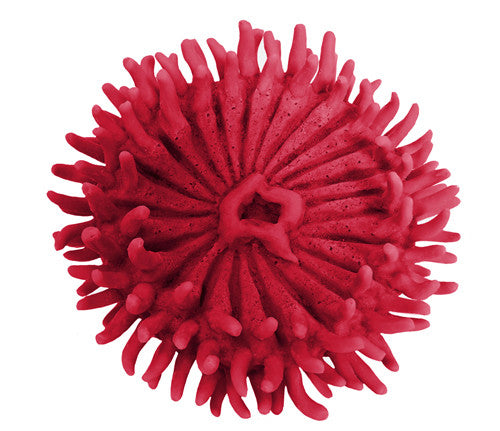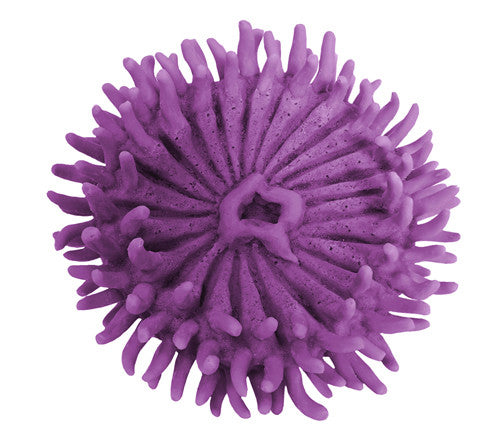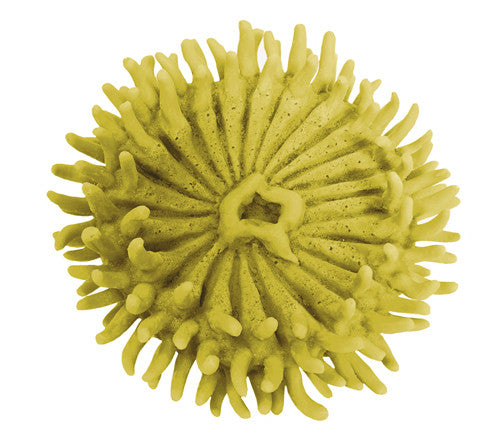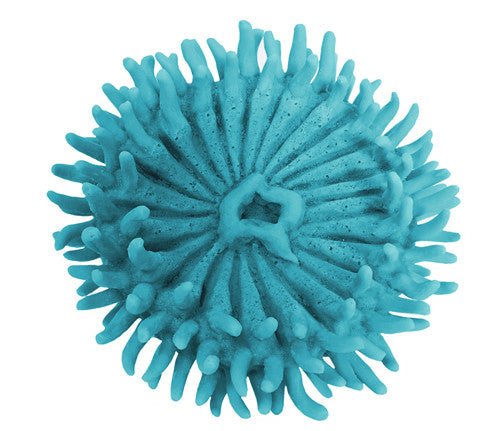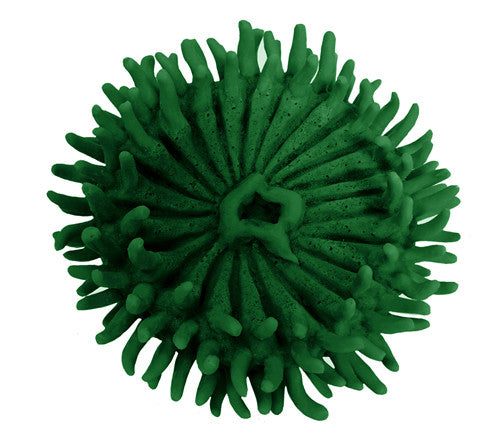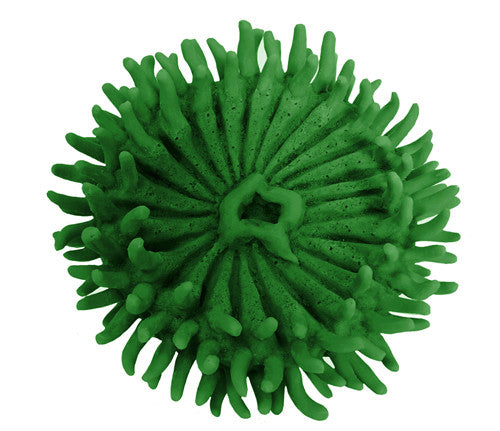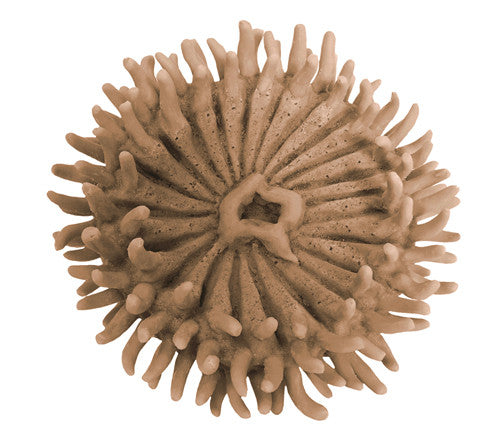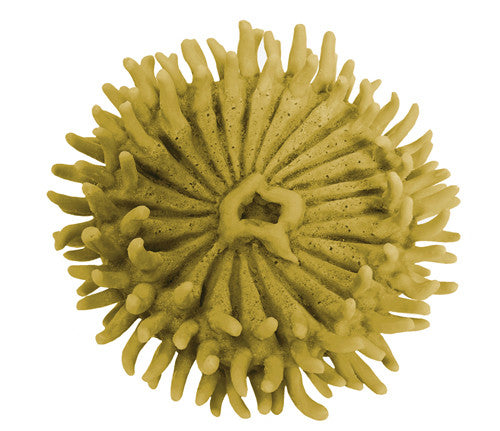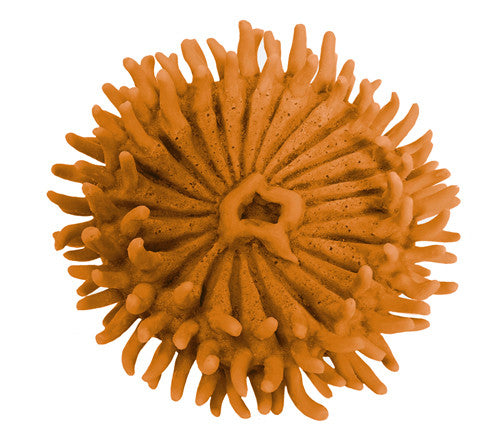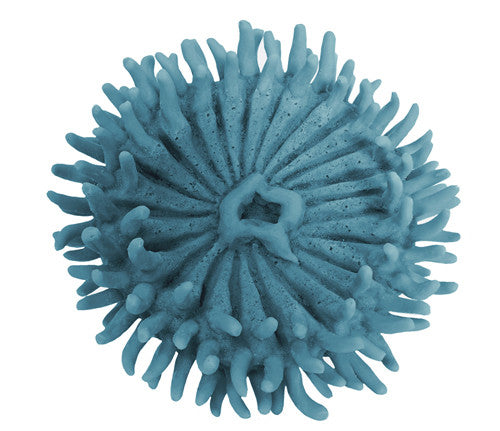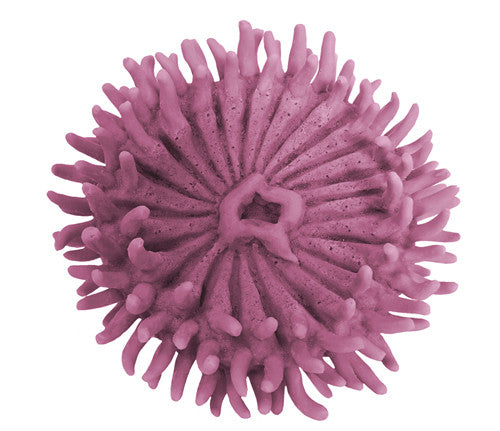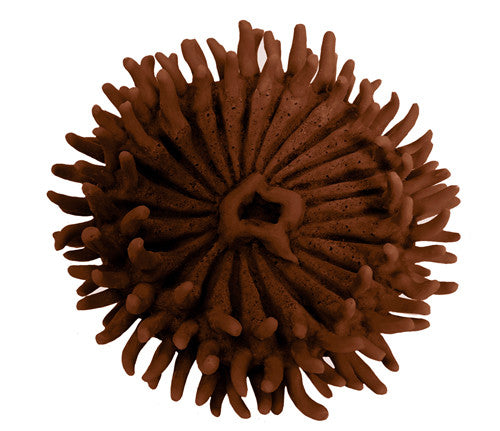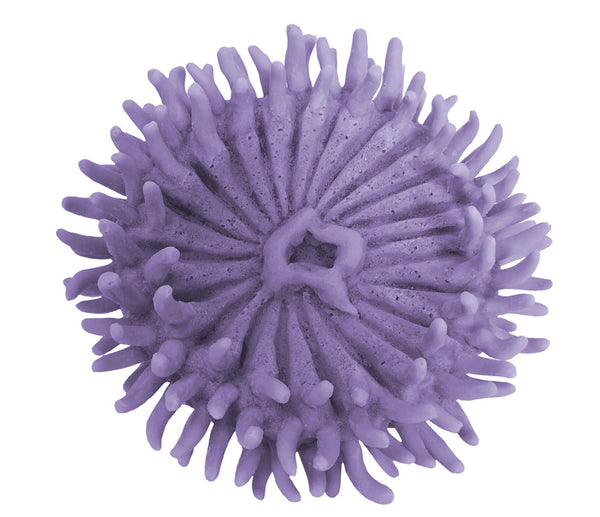Anthopleura xanthogrammica - Giant Green Anemone - #93100
Please make your color selection from the pull-down menu.
7" Dia x 3.5"
Physical description: The column width and height can reach a maximum of 17.5 and 30 cm, respectively.The crown of tentacles can be as wide as 25 cm in diameter, while the column, itself, tends to be widest at the base in order to offer a more stable connection to the rocks. It has a broad, flat oral disk surface and no striping, banding, or other markings.
Coloration: If A. xanthogrammica is exposed to proper amounts of sunlight, it can appear bright green when submerged under water.When not submerged, it appears dark green or brown. This is because the anemone tends to close up and "droop" and its now exposed column is actually dark green and slightly brown, but the hidden tentacles and oral disk are bright green.
Tentacles: The tentacles, which are short and conical, are arranged in six or more rows surrounding the oral disk and can be pointed or blunt at the tips.
Distribution: Generally, A. xanthogrammica is found along the low to mid intertidal zones of the Pacific Ocean, from Alaska to Southern California and sometimes downwards to Panama, where cold water swells can occur.
Habitat: A. xanthogrammica prefers to inhabit sandy or rocky shorelines, where water remains for most of the day. They can generally be found in tide pools up to 30 cm deep. Occasionally A. xanthogrammica can also be found in deep channels of more exposed rocky shores and concrete pilings in bays and harbors. Anthopleura xanthogrammica reproduce sexually via external fertilization of sperm and eggs in the late fall. Newly formed pelagic, planktotrophic larvae float in the water until dispersing and settling in mussel beds.
Similar species: Occasionally, A. xanthogrammica can be confused with large individuals of A. elegantissima or A. sola, but both of these other anemones have (usually) pink-tipped tentacles and a striped oral disk, unlike A.xanthogrammica. The anemone pictured bottom-right appears to an example of a Sunburst Anemone (Anthopleura sola) with its distinct radial stripes and is often confused with the Giant Green given its color.




















